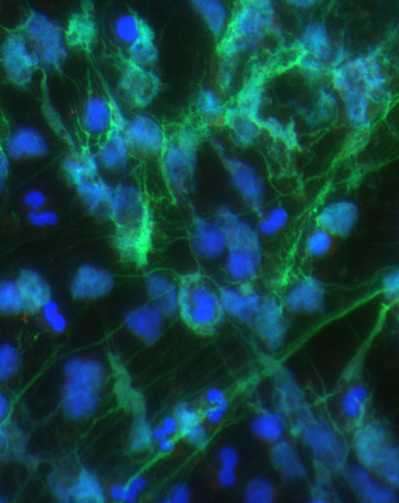Scientists discover how bacteria induce 'NET' release

Flagellar motility of Pseudomonas aeruginosa is the main factor required to induce the release of neutrophil extracellular traps (NETs), according to a study published November 17, 2016 in the open-access journal PLOS Pathogens by Bala?zs Rada from The University of Georgia, Athens, and colleagues.
Neutrophils are phagocytic blood cells found in the body's circulatory system and tissues, and provide the first line of defense against bacteria like the opportunistic pathogen P. aeruginosa. Neutrophils utilize numerous strategies to eliminate bacteria, most notably the formation of DNA-based scaffolds called "NETs". NETs, which have attached antimicrobial proteins, provide one of the most efficient methods of trapping and neutralizing invaders like P. aeruginosa, yet the mechanism that triggers their formation was previously unknown.
Scientists monitored P. aeruginosa at various phases of growth and discovered that NET release was maximal at the early exponential stage when its flagellum-promoted swimming motility was present. Researchers used various strains of P. aeruginosa to measure the production of NETs and developed their own protein-based assay in order to quantitate the levels of P. aeruginosa flagellin, the major constituent of flagella. They found that neutrophils did not produce NETs in response to the presence of P. aeruginosa flagellin alone but required actual flagellar motility, since immotile bacterial strains expressing paralyzed flagellum failed to stimulate NET formation.
For immunocompromised patients, such as those with cystic fibrosis (CF), chronic obstructive pulmonary disease (COPD), HIV, non-CF bronchiectasis, or hospital-acquired pneumonia, P. aeruginosa poses a serious clinical problem as it can cause severe lung infections and quickly adapts to diverse environments. This study not only sheds light on what causes neutrophils to form NETs but also suggests that flagellar motility genes could serve as targets for future pharmaceutical intervention.
More information: Madison Floyd et al, Swimming Motility Mediates the Formation of Neutrophil Extracellular Traps Induced by Flagellated Pseudomonas aeruginosa, PLOS Pathogens (2016). DOI: 10.1371/journal.ppat.1005987
Journal information: PLoS Pathogens
Provided by Public Library of Science




















